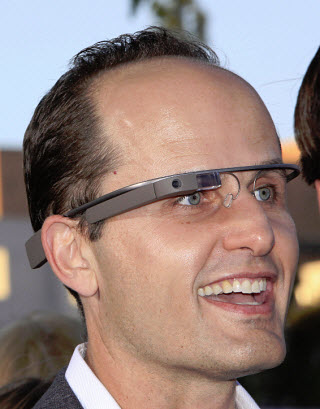These augmented reality glasses are being tested for use with medical conditions.
Starting at the end of last week, the emergency department at Rhode Island Hospital became the first one in the country to start to use Google Glass and its associated wearable technology for streaming live images of the medical conditions of the patients who were being seen there, in order to be able to consult with a specialist who was located somewhere other than in the hospital.
This is the start of a feasibility study that is meant to test the augmented reality glasses for six months.
Should the use of the Google Glass prove to be successful, Dr. Paul Porter, the project coordinator, believes that the use of these mobile devices will only expand in the medical arena. Potential users could include first responders in ambulances, surgeons, and others who could benefit from the recommendations of specialists while they are on the field or when there is no local specialist available.
Porter is highly enthusiastic about the possibilities for Google Glass in the health care environment.
He stated that it would be “like the Holy Grail” but added that “we’re just at the beginning; you have to start somewhere.” At the moment, the hospital will continue to test this wearable technology exclusively with emergency room patients who are suffering from various forms of dermatological struggles, such as skin rashes. These patients must volunteer to be a part of the study as opposed to being automatically entered into it.
The reason is that Porter feels that the standard of health care at the moment makes it so that handling these types of problems within an emergency room typically involves a basic visual inspection while asking the patient certain types of questions such as whether or not it is itchy, painful, etc.
The reason that these specific types of cases have been chosen for testing Google Glass in the emergency room is that if any glitches should occur within this wearable technology – such as a loss of the connection for audio or video – then the life and health of the patient will not be placed at risk.
Trends in this area are changing the skill sets required by marketers and the talent they hire.
With the explosion of the use of smartphones and the clear impact that social media marketing is now having on the shopping decisions that consumers are making, marketers are starting to require a new set of skills as they find themselves busier than ever in the attempt to use this medium to its fullest.
The use of this online and mobile marketing technique has expanded in two primary ways.
The more obvious purpose for social media marketing has been to provide businesses with a direct path that will connect them with consumers so that they can be specifically targeted. However, beyond this, there has been a considerable business to business segment that has not only taken off, but that is continuing to rapidly grow. This is requiring an entirely new tack in terms of posting and strategy, as it is having an impact on a company’s present and future customers, clients, relationships, and even talent.
The IT industry is currently evolving at a striking rate, and social media marketing is now at its heart.
 According to the Wipro head of corporate brand and communication, Sachin Mulay, “The IT industry has taken several steps in terms of being present there.” He went on to explain that “The science of marketing has completely changed because of technology and it is rapidly changing.” The technology that we now have at our fingertips is giving us the opportunity to market ourselves individually and personally and to provide customers with customized information. It is also offering the opportunity to provide the ideal information to the right person using an appropriate device at exactly the right time.
According to the Wipro head of corporate brand and communication, Sachin Mulay, “The IT industry has taken several steps in terms of being present there.” He went on to explain that “The science of marketing has completely changed because of technology and it is rapidly changing.” The technology that we now have at our fingertips is giving us the opportunity to market ourselves individually and personally and to provide customers with customized information. It is also offering the opportunity to provide the ideal information to the right person using an appropriate device at exactly the right time.
Similarly, the Cognizant executive vice president of strategy and marketing, Malcolm Frank, explained that businesses within the IT services arena are experiencing a growing benefit from social media marketing. The reason is that this presence can have an impact on new customers in that they can better understand the way that the company thinks, while it enhances the relationships among the company’s existing customers.


 According to the Wipro head of corporate brand and communication, Sachin Mulay, “The IT industry has taken several steps in terms of being present there.” He went on to explain that “The science of marketing has completely changed because of technology and it is rapidly changing.” The technology that we now have at our fingertips is giving us the opportunity to market ourselves individually and personally and to provide customers with customized information. It is also offering the opportunity to provide the ideal information to the right person using an appropriate device at exactly the right time.
According to the Wipro head of corporate brand and communication, Sachin Mulay, “The IT industry has taken several steps in terms of being present there.” He went on to explain that “The science of marketing has completely changed because of technology and it is rapidly changing.” The technology that we now have at our fingertips is giving us the opportunity to market ourselves individually and personally and to provide customers with customized information. It is also offering the opportunity to provide the ideal information to the right person using an appropriate device at exactly the right time.